GrabCAD

Blackboard NFC/Mag reader
by GrabCAD
Last crawled date: 1 year, 11 months ago
**EDIT** Updated description, uploaded STEP, Additional renderings [18th September 2014]
Please watch the Video/Animation provided
The design ethos is based on two core goals.
1. Ergonomics.
Queueing for lecture halls, a busy cafeteria environment, these are typical situations that the device would be used in so it needs to be quick and simple to use, without any hassle. To ensure that it is user friendly, the stand incorporates a tilt mechanism enabling the user to swipe from various angles (whether it be a wheelchair user or a tall male) it also enables the clerk to check if a transaction has been processed if the customer is unsure. In addition, when wall mounted, placed flat or handheld, there is plenty of room to manoeuvre, retaining its degree of functionality - usability is not compromised. Ergonomics is the very essence of the device.
2. Affordances and Semantics
Blackboard transact is all about ease of transactions. Similar to the description of ergonomics, the device has been designed in a way that conveys its essence of operation through its appearance, enabling a more fluent transaction experience. Led by the briefs description “a modern, ergonomic design with a high tech looking, marketable, and cool appearance”, my design manages to form its own unique identity whilst remaining discreet enough to blend in with its intended working environment.
As a device that will endure heavy daily usage, it is important that the aesthetics don’t scream novelty, rather, convey purity of function. By implementing subtle design features like a chamfered mag stripe entry slot, positioning of labels and discreet LED feedback, the product describes itself, no instructions are needed - the target audience can identify what it is and how to interact with it. I did not feel that the LEDS needed labelling as they can effectively communicate a message by varying frequency and colour (see video for demo of lights)
- The size has been kept to a minimum to reduce material costs and increase portability as it can be used as a handheld device.
- Can be swiped comfortably without any obstructions and is accessible to a variety of devices of different shapes and sizes.
- The stand uses a snap fit mechanism and can be easily removed if the product is needed elsewhere.
- USB port at the rear. It can be charged when mounted on the stand, flat or wall mounted.
- Tri colour LED (power) green for +60%, amber for 30-60%, red for <30%.
- Bluetooth light will pulse when connecting and illuminate when paired.
- The dual colour permit/deny LED uses red and green to provide feedback to the user.
- The PCB remains the same size as the file that was provided and the components are attached to the board itself which fits into the top half injection mould ribs and rests snugly upon the bottom half injection mould to ensure it is secure. Fixed together with (5x)13mm and (1x) 7mm (1.5m diameter) screws the housing is secure.
- To adhere to the briefs description, the wall thickness is 1.5mm, black plastic is used and has a removable battery (via screws). STL files are provided for 3D printing but do not include a number of parts as they would be superfluous for prototyping purposes.
Thanks for the opportunity to participate, I have enjoyed designing the product and have learned a lot from the process.
Please watch the Video/Animation provided
The design ethos is based on two core goals.
1. Ergonomics.
Queueing for lecture halls, a busy cafeteria environment, these are typical situations that the device would be used in so it needs to be quick and simple to use, without any hassle. To ensure that it is user friendly, the stand incorporates a tilt mechanism enabling the user to swipe from various angles (whether it be a wheelchair user or a tall male) it also enables the clerk to check if a transaction has been processed if the customer is unsure. In addition, when wall mounted, placed flat or handheld, there is plenty of room to manoeuvre, retaining its degree of functionality - usability is not compromised. Ergonomics is the very essence of the device.
2. Affordances and Semantics
Blackboard transact is all about ease of transactions. Similar to the description of ergonomics, the device has been designed in a way that conveys its essence of operation through its appearance, enabling a more fluent transaction experience. Led by the briefs description “a modern, ergonomic design with a high tech looking, marketable, and cool appearance”, my design manages to form its own unique identity whilst remaining discreet enough to blend in with its intended working environment.
As a device that will endure heavy daily usage, it is important that the aesthetics don’t scream novelty, rather, convey purity of function. By implementing subtle design features like a chamfered mag stripe entry slot, positioning of labels and discreet LED feedback, the product describes itself, no instructions are needed - the target audience can identify what it is and how to interact with it. I did not feel that the LEDS needed labelling as they can effectively communicate a message by varying frequency and colour (see video for demo of lights)
- The size has been kept to a minimum to reduce material costs and increase portability as it can be used as a handheld device.
- Can be swiped comfortably without any obstructions and is accessible to a variety of devices of different shapes and sizes.
- The stand uses a snap fit mechanism and can be easily removed if the product is needed elsewhere.
- USB port at the rear. It can be charged when mounted on the stand, flat or wall mounted.
- Tri colour LED (power) green for +60%, amber for 30-60%, red for <30%.
- Bluetooth light will pulse when connecting and illuminate when paired.
- The dual colour permit/deny LED uses red and green to provide feedback to the user.
- The PCB remains the same size as the file that was provided and the components are attached to the board itself which fits into the top half injection mould ribs and rests snugly upon the bottom half injection mould to ensure it is secure. Fixed together with (5x)13mm and (1x) 7mm (1.5m diameter) screws the housing is secure.
- To adhere to the briefs description, the wall thickness is 1.5mm, black plastic is used and has a removable battery (via screws). STL files are provided for 3D printing but do not include a number of parts as they would be superfluous for prototyping purposes.
Thanks for the opportunity to participate, I have enjoyed designing the product and have learned a lot from the process.
Similar models
grabcad
free

Blackboard Transact
...re of the device and reduce its footprint to a minimum.
thank you all.
note: check the turntable animation inside files folder.
grabcad
free

NFC/ Mag stripe reader
...ed by blinking red light.
battery can be charged by usb connection or by easily replacing it.
wall mount and stand is included.
grabcad
free

Blackboard Reader Device Challenge entry 2
...for the reader device challenge. this design has some similarty to my previous design, however this design is easierer...
grabcad
free

Blackboard Transact AD001 - By Adriano Barissa
...a
grabcad
multifunctional device which can be fixed to walls or using on stands.
built with four main parts in injected polymer.
grabcad
free

Blackboard Transact keyreader
...rations and maintains it's unique look and feel.
update: check the mpeg video for an impression of the multi-coloured led!!
grabcad
free

Ergonomic NFC and Mag Stripe Card Reader
...evice *.
dimensions 98 x 65 x 30 mm
-------------------------------------
* including a small speaker is highly recommended.
grabcad
free

Blackboard Reader Device Challenge entry
...vice needs to be connected to the dock for charging, red leds start flashing.
please, feel free to take a look at the 3d models.
grabcad
free

Blackboard Reader Device Challenge
...esigned so it can be printed in 3d as well as injection molded.
technical drawings & renderings will be uploaded when needed.
grabcad
free

Consumer Electronics Housing for handheld portable device
... which is to house electronics hardware. the internal detail is not htere and its 80% designed with draft for injection moulding.
grabcad
free

BlackBoard Transact
...oard transact . the design is functional, simple and ergonomic. stay tune for final updates.....
all the best to all competitors
Nfc
turbosquid
$2

NFC ring
...del nfc ring for download as ma, fbx, dae, obj, usdz, and stl on turbosquid: 3d models for games, architecture, videos. (1519322)
3d_ocean
$12

Harman Kardon Nova
...3docean black bluetooth by electronics harman kardon melody mp3 nfc speakers white wi-fi speakers by harman kardon...
3d_export
$10

Beats audio pill 3D Model
...3dexport beats audio pill dr dre dedre music bluetootoh nfc wi-fi beats audio pill 3d model download .c4d .max...
3d_export
$10
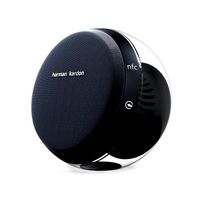
Harman Kardon Nova 3D Model
...3dexport speakers by harman kardon nova electronic wi-fi bluetooth nfc plastic black white harman kardon nova 3d model download...
cg_studio
$30

PANASONIC ELUGA POWER3d model
...cream sandwich cell mobile phone cellphone smartphone solidworks c4d nfc .3dm .3ds .c4d .obj .wrl - panasonic eluga power...
3d_ocean
$25

NFL logos pack
...the national football league team logos (plus nfl logo, nfc logo, afc logo and 3d digits). it was made...
3ddd
$1

SONY Home theatre BDV-N9100WL
...speakers, online access to sony entertainment network and one-touch nfc streaming to make your home entertainment truly...
thingiverse
free

NFC Championship Trophy
...nfc championship trophy
thingiverse
remix of original nfc trophy #1 nfc logo offset #2 nfc logo inset
3dfindit
free
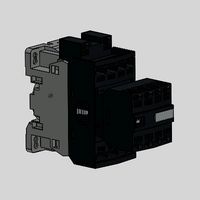
NFC
...nfc
3dfind.it
catalog: abb low voltage & systems
thingiverse
free
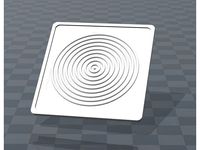
Case NFC by mbr386
...case nfc by mbr386
thingiverse
for pn532 nfc
Blackboard
3ddd
free
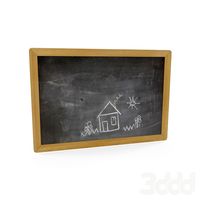
Blackboard
...blackboard
3ddd
blackboard
blackboard in wood frame with some drawings.
turbosquid
free

Blackboard
...oard
turbosquid
free 3d model blackboard for download as fbx on turbosquid: 3d models for games, architecture, videos. (1357354)
turbosquid
$14

Blackboard
...
royalty free 3d model blackboard for download as max and fbx on turbosquid: 3d models for games, architecture, videos. (876252)
turbosquid
$7

Blackboard
...ty free 3d model blackboard for download as 3ds, max, and obj on turbosquid: 3d models for games, architecture, videos. (1150334)
turbosquid
$4

Blackboard
...ty free 3d model blackboard for download as max, obj, and fbx on turbosquid: 3d models for games, architecture, videos. (1148788)
turbosquid
$5

Blackboards
...3d model blackboards for download as max, blend, obj, and fbx on turbosquid: 3d models for games, architecture, videos. (1711476)
turbosquid
$2

Blackboard
...ee 3d model blackboard for download as 3ds, obj, c4d, and fbx on turbosquid: 3d models for games, architecture, videos. (1211119)
turbosquid
$25

BlackBoard
... available on turbo squid, the world's leading provider of digital 3d models for visualization, films, television, and games.
3d_export
$10

Blackboard 3D Model
...blackboard 3d model
3dexport
3d models furniture entertainment center blackboard
blackboard 3d model geralddish 78611 3dexport
turbosquid
$1

school blackboard
...ool blackboard for download as 3ds, obj, x, c4d, fbx, and dae on turbosquid: 3d models for games, architecture, videos. (1331491)
Reader
archive3d
free
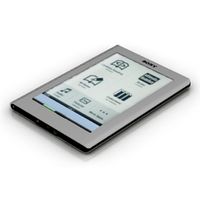
Sony reader 3D Model
...book reader
sony reader prs 600 n250413 - 3d model (*.gsm+*.3ds) for interior 3d visualization.
turbosquid
$20

RFID Reader
...royalty free 3d model rfid reader for download as obj and 3dm on turbosquid: 3d models for games, architecture, videos. (1450180)
turbosquid
$18

Biometric Reader
... available on turbo squid, the world's leading provider of digital 3d models for visualization, films, television, and games.
turbosquid
$5

Card Reader
... available on turbo squid, the world's leading provider of digital 3d models for visualization, films, television, and games.
turbosquid
$1

E-reader
...3d model e-reader for download as blend, dae, obj, stl, and x on turbosquid: 3d models for games, architecture, videos. (1686014)
turbosquid
$5

Reader Table Lamp
... 3d model reader table lamp for download as max, obj, and fbx on turbosquid: 3d models for games, architecture, videos. (1354074)
3d_export
free

the reader armchair
...his model are made of substance painter software and are of the highest quality.<br>hope you enjoy it.<br>smj hoseini
turbosquid
$10

Random Reader Rabobank
... available on turbo squid, the world's leading provider of digital 3d models for visualization, films, television, and games.
turbosquid
$1

Credit Card Reader
... available on turbo squid, the world's leading provider of digital 3d models for visualization, films, television, and games.
3d_export
$10

Set Reader 3D Model
...set reader 3d model
3dexport
book lamp whiskey glass drink botle decor
set reader 3d model raman 98904 3dexport
Mag
turbosquid
free

mags
... available on turbo squid, the world's leading provider of digital 3d models for visualization, films, television, and games.
design_connected
$11
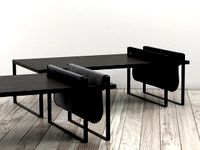
Soft Mag
...soft mag
designconnected
ligne roset soft mag computer generated 3d model. designed by ruyant, frederic.
turbosquid
$4
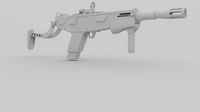
MAG-7
...quid
royalty free 3d model mag-7 for download as c4d and fbx on turbosquid: 3d models for games, architecture, videos. (1262605)
turbosquid
$25
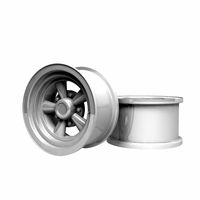
Mag Wheels
... available on turbo squid, the world's leading provider of digital 3d models for visualization, films, television, and games.
turbosquid
$15

Mag Wheel
... available on turbo squid, the world's leading provider of digital 3d models for visualization, films, television, and games.
turbosquid
free
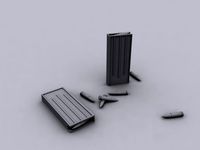
box mag
... available on turbo squid, the world's leading provider of digital 3d models for visualization, films, television, and games.
3d_ocean
$18

Calligaris Mag Collection
...cts set textured
calligaris mag collection – all models 4 materials included: - black - white - wood - turtledove obj + max files
turbosquid
$8

Lapua Mag bullet
...
royalty free 3d model lapua mag bullet for download as blend on turbosquid: 3d models for games, architecture, videos. (1423136)
turbosquid
$20

Purple Mag Light
... available on turbo squid, the world's leading provider of digital 3d models for visualization, films, television, and games.
turbosquid
$10

mag pouch with ammo
...g pouch with ammo for download as max, max, obj, max, and fbx on turbosquid: 3d models for games, architecture, videos. (1691499)
